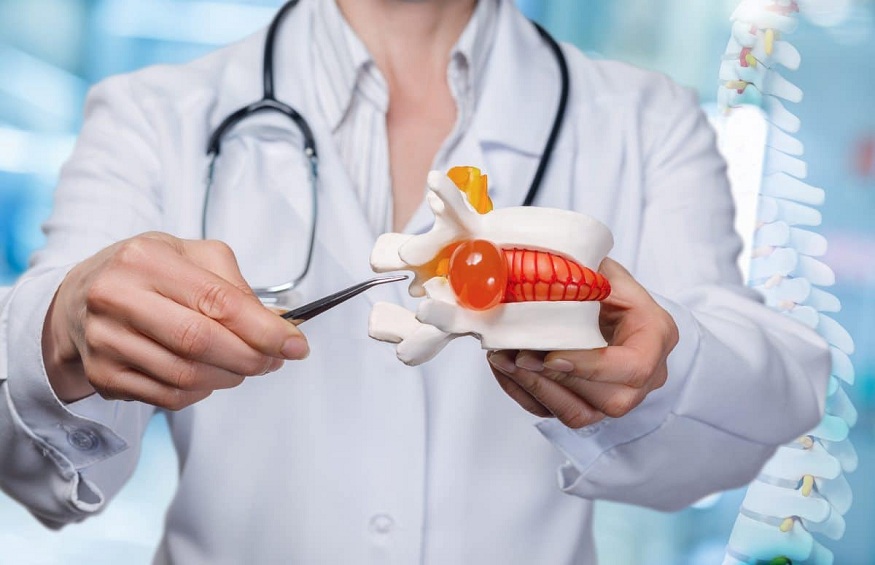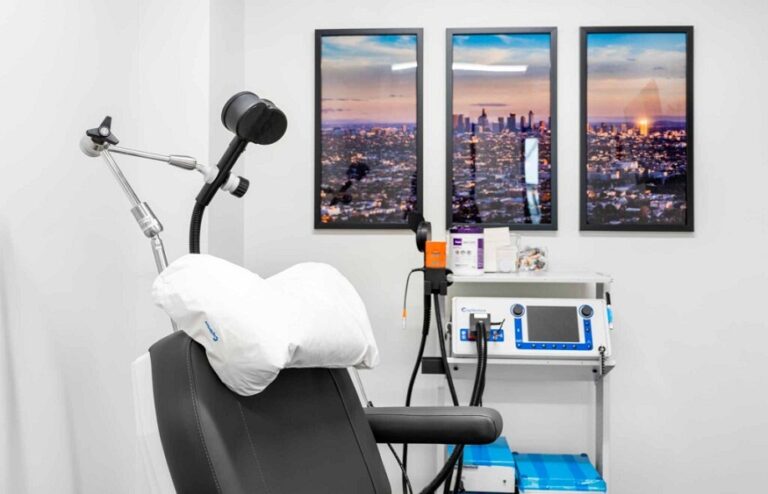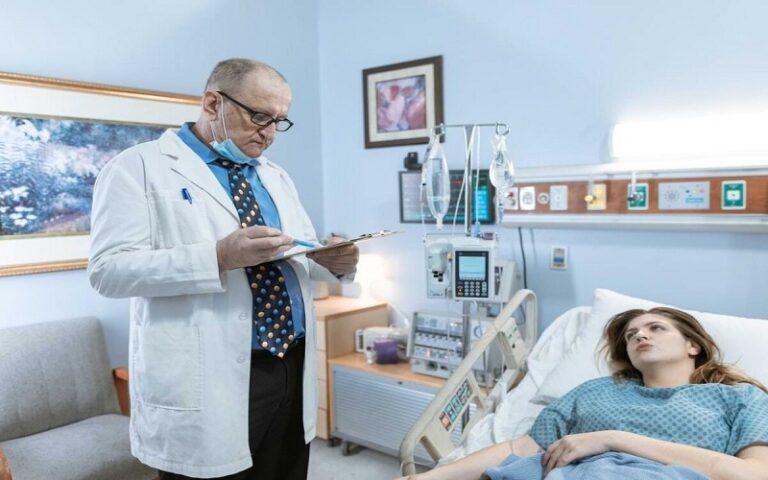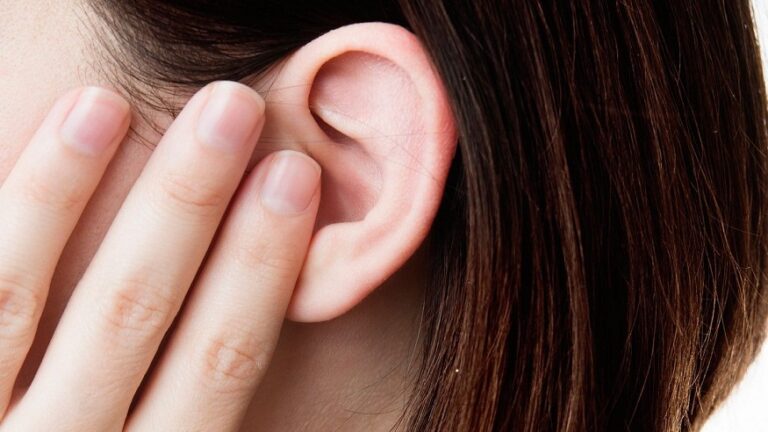A herniated disc can happen without much warning! For example, it can occur while we are carrying out the simplest activities, such as moving furniture or having a sedentary lifestyle. Since the health crisis, back pain linked to telework has become frequent.
If you have symptoms associated with a herniated disc, make an appointment for a physical therapy consultation .
What is a herniated disc? What are its causes?
The spine is made up of several vertebrae. Between each vertebra, there is a disc that acts as a cushion, which cushions and distributes the weight that is applied to the spine.
This disk is among other things composed of water. The comparison is often made with a small bag filled with gel to facilitate the analogy, but it is in fact much firmer and very firmly attached to the adjacent bony structures.
It has a more aqueous central phase (nucleus), and is surrounded by ligamentous structure around it (ring). Its function is to support and distribute loads.
This disc also needs to be subjected to loads, since its nutrition is done by diffusion of oxygen and nutrients during a compression force.
The herniated disc occurs when the gelatinous portion of the nucleus contained in the disc is expelled outside.
The condition can be caused by sudden physical exertion, awkward movement, prolonged load, or repeated movement performed in a position that is difficult to distribute the weight.
Herniated discs are most often found in the lower back in the lumbar region, but also in the cervical region and sometimes in the thoracic region.
A herniated disc causes different symptoms that can be treated by your physiotherapist. Back pain is the most common symptom. The pain can also be felt in the lower back, and frequently radiate to the buttock or leg.
People may also experience stiffness, tightness, feelings of muscle weakness, and sometimes altered or decreased sensation in one leg and increased fatigue in the lower back.
Moreover, tasks that require efforts of the lower back are often very painful. Like, for example, bending down to pick up an object on the ground, or putting on your shoes.
You may find it difficult to tolerate prolonged static positions like sitting, driving, or even standing, and the pain wakes you up at night.
It should be noted, however, that the disc symptoms of herniated disc vary from person to person, and that in some cases, the herniated disc could be painless.
Can you live with a herniated disc without feeling pain?
In fact, yes! It is important to note that disc degeneration, or the wear and tear of the disc observed on imaging, is very present in a large percentage of the population and tends to increase with age, but that this is not synonymous with pain.
In other words, many people have disc changes in their spine, but are not aware of it since they do not feel pain and they are able to carry out their work and activities.
What is the difference between a lumbar sprain, lumbar pain and a herniated disc?
In fact, when we talk about lumbar sprain , we are not talking about a specific injury, but about a generic concept that describes an injury in the lumbar area, in the lower spine. Lower back pain is referred to as lower back pain.
Is there a link between herniated disc and sciatica?
We speak of sciatica when we refer to a burning-like pain, with numbness behind the leg, connected to the great sciatic nerve which originates deep in the buttock. This nerve is an assembly of several roots in the lumbar and sacral area of the lower back.
The origin of the irritation could indeed be linked with a herniated disc. In the case of sciatica or pain of nervous origin, the pain in the leg is often stronger than the pain in the lumbar area.
Focus on cervical disc herniation
As we have seen, a herniated disc most often affects the lower back, but it can also affect the neck. We therefore speak of cervical disc herniation when the intervertebral disc of the neck area is involved.
One of the causes of cervical disc herniation can be trauma: it can be a fall or a shock, such as a road accident. However, it can also be linked to a change in activity, inactivity, prolonged positions or even a combination of factors.
Pain is the main symptom of a herniated cervical disc. It can be localized in the neck, as it can radiate towards the scapula or one of the upper limbs.














+ There are no comments
Add yours